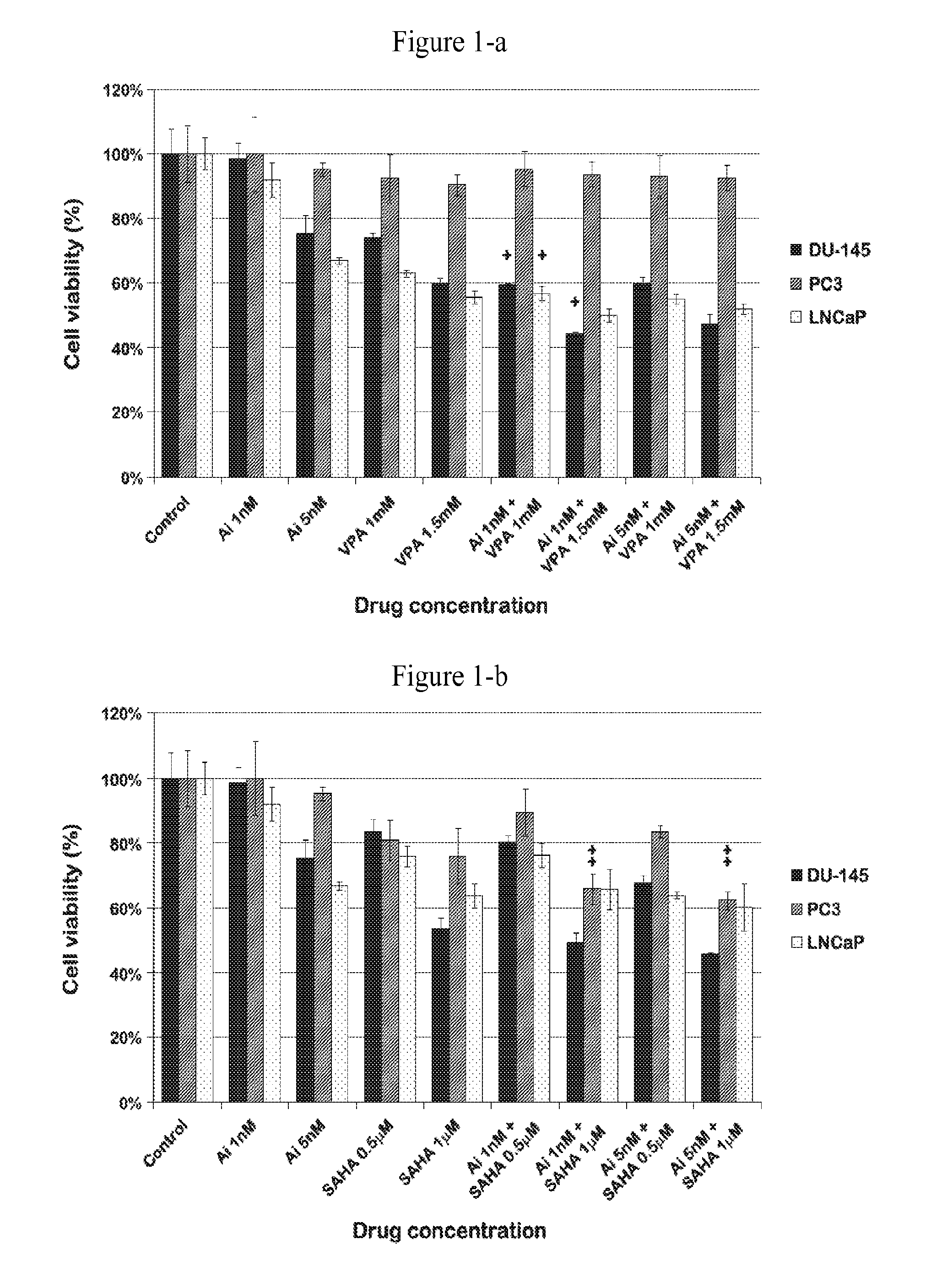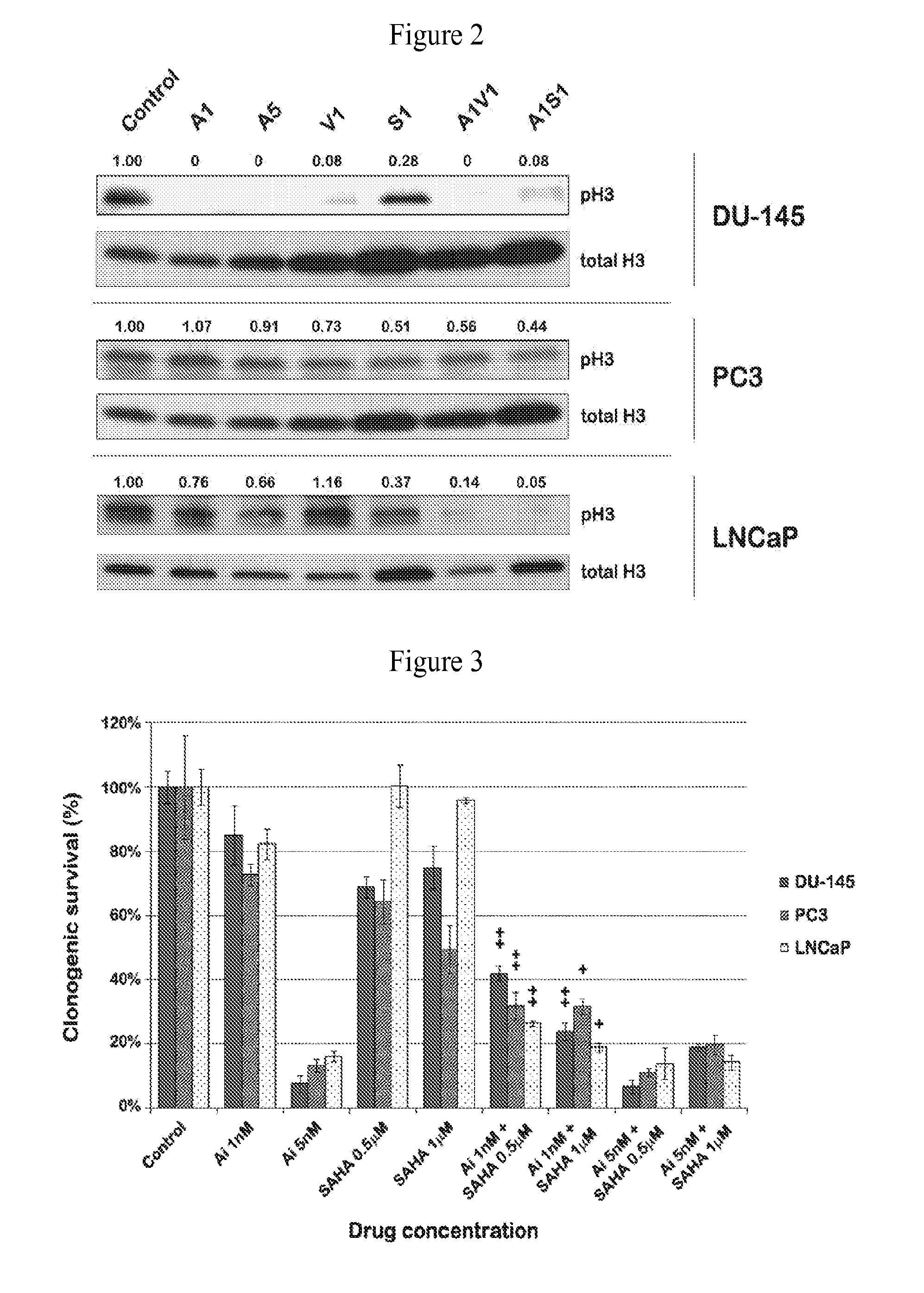Use of n-(4-((3-(2-amino-4-pyrimidinyl)-2-pyridinyl)oxy)phenyl)-4-(4-methyl-2-thienyl)-1-phthalazinamine in combination with histone deacetylase inhibitors for treatment of cancer
a technology of phthalazinamine and histone deacetylase, which is applied in the direction of anhydride/acid/halide active ingredients, heterocyclic compound active ingredients, biocide, etc., can solve the problems of irreversible neuropathy, severe side effects of docetaxel, and inability to control the growth and/or progression of cancer cells, so as to improve the effect, prolong the effect of treatment, and slow the growth and/or progression of cancer
- Summary
- Abstract
- Description
- Claims
- Application Information
AI Technical Summary
Benefits of technology
Problems solved by technology
Method used
Image
Examples
example 1
[0042]
Synthesis of N-(4-((3-(2-amino-4-pyrimidinyl)-2-pyridinyl)oxy)phenyl)-4-(4-methyl-2-thienyl)-1-phthalazinamine (AMG 900)
Step 1: 4-(2-chloropyridin-3-yl)pyrimidin-2-amine
[0043]In an argon purged 500 mL round bottom flask placed in an isopropanol bath, was added sodium metal (3.40 g, 148 mmol) slowly to methanol (180 mL). The mixture was stirred at room temperature (RT) for about 30 minutes. To this was added guanidine hydrochloride (12.0 mL, 182 mmol) and the mixture was stirred at RT for 30 minutes, followed by addition of (E)-1-(2-chloropyridin-3 -yl)-3 -(dimethylamino)prop -2-en-1 -one (12.0 g, 57.0 mmol), attached air condenser, moved reaction to an oil bath, where it was heated to about 50° C. for 24 h. Approximately half of the methanol was evaporated under reduced pressure and the solids were filtered under vacuum, then washed with saturated sodium bicarbonate (NaHCO3) and H2O, air dried to yield 4-(2-chloropyridin-3-yl)pyrimidin-2-amine as off white solid. MS m / z=207 [M...
example 2
[0051]To investigate whether AMG 900-induced suppression of aurora kinase A and B activity inhibits cell proliferation in combination with an HDAC inhibiting agent such as VPA or SAHA, the antiproliferative, expression of phosphor-histone H3 (pH3) and / or clonogenic survival effect of AMG 900 and an HDAC inihibiting agent, alone and in combination, were evaluated in vitro using prostate cancer cell lines. As shown in FIGS. 1-a, 1-b, 2, 3, 4 and 5, AMG 900 exhibited useful and synergistic antiproliferative, cell survival and reduced downstream expression activity in prostate cancer cells. This anti cancer activity was seen with low concentrations and dosages of AMG 900. Importantly, lower dosages of AMG 900, in combination with an HDAC inhibiting agent, such as VPA or Vorinostat, provide the same or greater effect on cellular apoptosis and, therefore at treating cancer, than with a higher dose of AMG 900 as a single agent.
[0052]As shown in FIGS. 1-a and 1-b, proliferation activity of ...
example 3
[0071]To investigate whether AMG 900-induced suppression of aurora kinase A and B activity inhibits cell proliferation in combination with an HDAC inhibiting agent such as VPA or SAHA, the effect of AMG 900 and an HDAC inihibiting agent, alone and in combination, were evaluated in vivo in rodents. As shown in FIGS. 6 and 7, AMG 900 exhibited useful and synergistic effects on tumor growth and reduced downstream expression of phospho-histone H3 (pH3). This anti cancer activity was seen with low concentrations and dosages of AMG 900. Importantly, lower dosages of AMG 900, in combination with an HDAC inhibiting agent, such as VPA or Vorinostat, provide the same or greater effect on tumor growth and, therefore at treating cancer, than with a higher dose of AMG 900 as a single agent.
[0072]FIG. 6 is a graph depicting the in-vivo effects on tumor growth after treatment with AMG 900 and HDACIs valproic acid or vorinostat, alone or in combination. A3.75 alone represents AMG 900 at a dosage of...
PUM
| Property | Measurement | Unit |
|---|---|---|
| flow rate | aaaaa | aaaaa |
| pH | aaaaa | aaaaa |
| volume | aaaaa | aaaaa |
Abstract
Description
Claims
Application Information
 Login to View More
Login to View More - R&D
- Intellectual Property
- Life Sciences
- Materials
- Tech Scout
- Unparalleled Data Quality
- Higher Quality Content
- 60% Fewer Hallucinations
Browse by: Latest US Patents, China's latest patents, Technical Efficacy Thesaurus, Application Domain, Technology Topic, Popular Technical Reports.
© 2025 PatSnap. All rights reserved.Legal|Privacy policy|Modern Slavery Act Transparency Statement|Sitemap|About US| Contact US: help@patsnap.com



